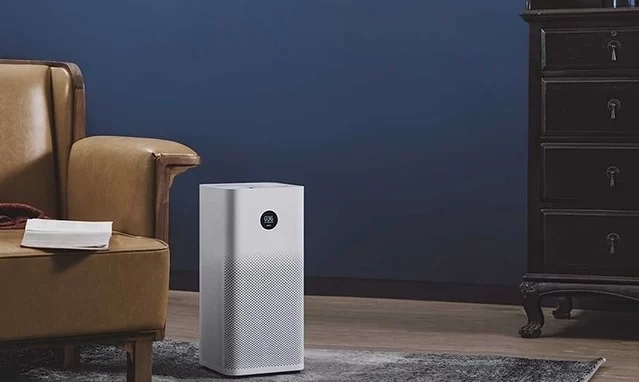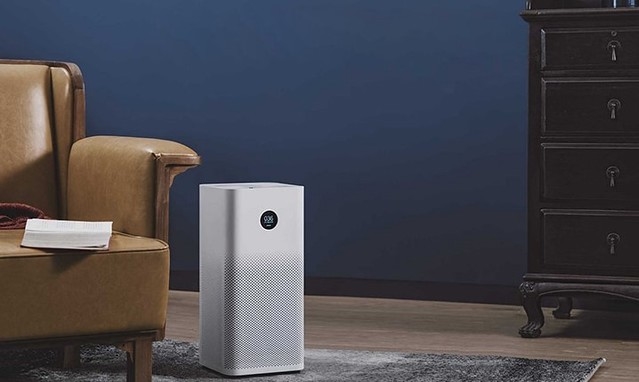The environmental impact of dust is particularly high in densely populated areas, even indoors.

House dust mites or fine dust are among the pollutants that make many people ill. With a special air purifier against dust, you can protect yourself from this environmental pollution. But which devices are best suited for this?
In this article, you will learn what pollution is caused by dust, which air purifiers perform best, and what you should pay attention to when buying. Also, you will know the best deals for the upcoming Black Friday. And here you can find details October 2022 Black Friday air purifier deals on Amazon.
Is Dust Harmful to Health?
Coarse dust is caught by our nose hairs and our mucous membranes. However, very fine dust can get into our lungs. This can also be harmful to health, depending on the type of dust involved.
- Dust from cement-bound asbestos can be very dangerous or Eternit
- A toxic effect containing vanadium, lead, beryllium, or mercury is also
- Other substances accumulate on the surface of dust particles, including hydrocarbons, sulfur, or nitrogen compounds. This increases their harmful effects on health.
Which Air Purifiers Help Against Dust?
Air purifiers can filter out many harmful particles from the air you breathe indoors. However, there are different cleaning methods and filters, the following air purifiers help against dust:
- Activated carbon filter: Devices with activated carbon filters force the air through porous carbon, while the dust molecules stick.
- Hepa Filter: Close-meshed mats ensure that dust particles remain in the Hepa filters.
- Ionizers: Dust particles are ionized by ions. This causes them to be attracted and deposited on the ionizer. So they are true dust magnets and are therefore considered effective air dedusters.
- Air washer: The air in the room is circulated and washed by water via water rollers.
- Combination devices: Some devices combine several of the filter types mentioned above. This leads to an even better result.
Read Also:
Effective Air Purifiers Against Dust
In the following, we would like to introduce you to three popular models that have already proven themselves with other buyers.
- The Comedies LR 700 air purifier works with a HEPA filter, an additional activated carbon filter, and a TIO2 filter. With this device, you have an LED color display, a remote control, a dual air quality measurement, and a filter change indicator. The device is well suited for rooms up to 50 m².
- The CA-807 from Clean Air Optima is suitable for particularly large rooms, such as offices. With this device, you can cover all rooms up to a size of 70 m² very well. This air purifier against dust is a device that works with a water filter.
This includes a pre-filter in the form of an activated carbon filter. Air humidification is achieved through cold evaporation. This principle of cold evaporation has the advantage that your interior can never get too humid.
- The Aktobis WDH-220B air purifier from WDH is characterized by the fact that, in addition to cleaning the air from dust, it is also particularly good at removing all forms of pollen, germs, and mold spores from the air via the HEPA filter.
The additional activated carbon filter is particularly effective against tobacco smoke. At 99.97%, almost 100% of all harmful substances are filtered out of the air you breathe. You can choose three levels with this device, namely strong, weak, or the particularly quiet night mode.
Dust Allergy and the Role of House Dust Mites
People who are said to be allergic to house dust are usually allergic to dust mite excretions. Dust mites feed on human dander. Each of us loses about 1.5g of dead skin cells a day.
The small roommates cannot be seen with the naked eye, as they are only 0.1 to 0.5 mm in size, depending on the species. But as you have seen from the explanations above, house dust consists of many other things that can also trigger all kinds of hypersensitivity reactions.
What Types of Dust Are There?
Dust only becomes noticeable to us when it settles on the ground, this is also known as dust precipitation. However, fine dust does not settle in the first place but remains in the air, referred to as suspended dust.
- Although a general distinction is made between house dust and fine dust when it comes to dust, this distinction is misleading.
According to scientific studies, house dust also consists mainly of fine dust. Fine dust, on the other hand, may consist of a wide variety of particles.
- Components of fine dust are, for example, particles from the erosion of rocks, desert sand, microorganisms such as fungal spores and more, salt crystals, plant pollen, or volcanic ash.
Of course, frequent dusting and vacuuming also help against too much dust in the air you breathe. But the effectiveness with which an air purifier filters the air you breathe indoors against dust cannot be achieved even with a lot of effort. Furthermore, airborne dust cannot be controlled without an air purifier.
How Big Are the Dust Particles?
For the dust air purifier to work effectively, the filter must be fine enough to filter the particles out of the air. Depending on the type of dust, the size of the dust grains differs.
- Particles larger than 10 microns are referred to as coarse dust.
- Particulate matter is smaller than 10 microns. There is a coarse fraction (2.5 – 10 micrometers and a fine fraction (0.1 – 2.5 micrometers)
- Nanoparticles are smaller than a millionth of a millimeter.
Which air purifier works best depends on the type of filter. It can be said that a Hepa filter or a combination model (Hepa and carbon filter, or with a nano filter) works most effectively. Therefore, when buying, pay attention to the information up to which particle size the filter also works effectively.
How is Dust Formed?
There are countless ways in which dust is created. In the following we would like to list some of them as examples:
- A lot of fine dust is also caused by exhaust gases from cars, ships, or airplanes. Heating systems or power plants continue to contribute to the fine dust pollution of the environment.
Even things like New Year’s fireworks, candles, or oil lamps increase the level of particulate matter in the air. Even animal husbandry in agriculture produces fine dust in a not-inconsiderable amount.
- Other sources of fine dust are abrasion from tires, brake pads, or our roads. The limit values for tolerable fine dust pollution indoors are particularly often exceeded when someone is still smoking in these rooms. Tobacco smoke is therefore not an insignificant factor when it comes to particulate matter.
- But the smoke from bush or forest fires, from open fires such as in fireplaces or wood heating, is also part of the particulate matter.










